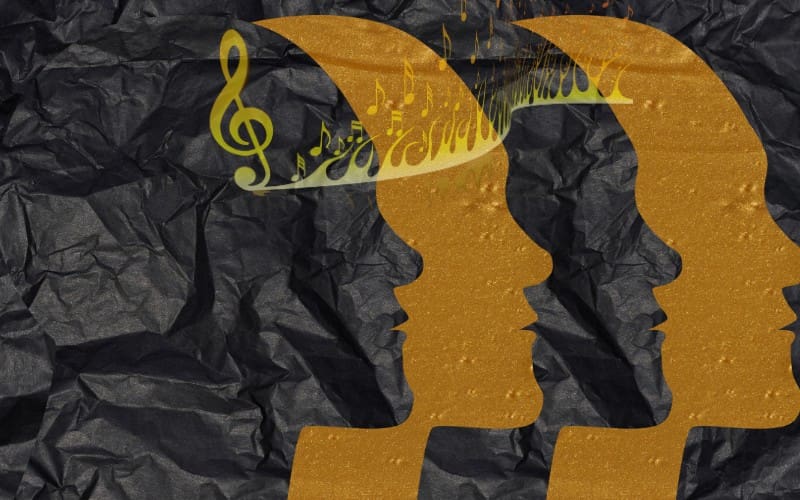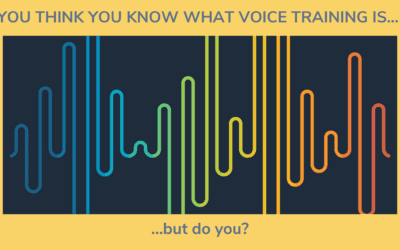Inside This Article
One of the most googled phrases about singing and voice lessons is: “teach yourself to sing,” which I find fascinating. It’s fascinating that so many people want to sing and their first instinct is to learn on their own. This is crucial, because it points at a fundamental truth: even if you are working with a teacher or coach, one is ALWAYS teaching oneself to sing.
a fundamental truth: even if you are working with a teacher or coach, one is ALWAYS teaching oneself to sing.
Robert Sussuma
So, of course, this gets me wondering… if this fundamental truth is always there, why is it rarely talked about? Why has the voice industry become one where “experts” tell others what to do – and most often are telling others to do what they, themselves don’t do!
Why aren’t there more “teachers” and coaches out there who understand how to guide an individual’s own learning rather than try to “teach” them “from the outside in”? Why don’t people know that all learning – even if/when there is outside influence (which is great!) – is always an “inside out” process?
You taught yourself to speak… no?
You had lots of people speaking around you and modeling what you would eventually learn in your own way, but no one taught you how to move your lips, tongue, palate and jaw to form a /b/ sound or a /z/ sound. You did that. No one taught you how to put your first word together, you did that. No one taught you how to put your first sentences together, you did that! (And for those of you who are going to get all Chomsky/Language Instinct on me, I’m not into it, so save your breath.)
So, yes, you can teach yourself to sing. And, every singer who has ever sung – well or otherwise – though they have had outside influences and even “teachers,” they too taught themselves to sing! It’s a part of being a learning self – which we all are… it’s what we do (regardless of our stories about needing experts, teachers, practice routines, exercises, etc.).
So, I’ve put together a 7-step process that anyone can follow in order to begin and/or maximize their self-learning singing process.
Seven ways to teach yourself to sing:
1. Listen, listen, listen…
Listen to all kinds of singing and singers – the same song sung by many different people – so that you can start to get a feel for what they do, when and how. Listen to many different styles of singing – different genres, music from different cultures – the possibilities are endless, yet they all have one thing in common, the human voice.

And, after a while, while you are listening… sing along, embody the style and sounds yourself, find it in your own singing self, somatically. It’s not an impersonation, it’s a joining of your nervous system to theirs so that you match more and more the “feel” of what they’re doing, but in your own way – within your own sense of comfort and ease, of course, but sometimes, it’s a stretch and can feel really weird. If you feel vocal fold discomfort (tickle, cough, scratch, etc.) stop and or find a different way that’s more comfortable.
But, keep playing with these sounds and style!
2. Observe, observe, observe…
While you are doing so, keep your awareness ON! Pay attention to what you are noticing in them and in yourself. What are you doing when you do what you do? After a while of this detailed play with awareness, you’ll begin to make finer and finer distinctions between the different things you are doing. Notice what you really like! What sounds really good to you, what feels really good? Record yourself when you find something interesting and listen to it. What does it sound like to you?

And when you are observing others, be sure to notice the details of what they do when they do it… the tilt of the head, the flick at the end of a long note, their shoulders, their posture… It’s all useful information. Try them on. See where they take you.
Find different ways to do the same things, but YOUR WAY!
3. Play, play, play…
Without any external inspiration – listening to something first, etc. you already did that! – and without any sense of judgment (getting it right or wrong, etc.) and without any particular goal or outcome in mind… SING! Enjoy making sounds, playing with different sounds at different times. This could be pure improv or singing a song in new and interesting ways.

Sing lots of songs this way. Of course, you’re going to pull on the kinds of things you’ve discovered and enjoyed in steps one and two, but let it happen naturally and organically. Allow your system to use what it has available from your listening and observing time almost as if it were “happening on its own.” Then play with that in new ways…
One of the big secrets to somatic learning is playing with variations of variations of variations. That’s where the magic lies! (BTW, 10mins. here and there throughout the day is totally enough to keep the process going!)
4. Sense, sense, sense… *
Once steps 1-3 become more familiar and “second nature,” it’s time to take things to the next level! Before starting a session, take some time just to “sense yourself.” By doing a body scan or a voice scan. This means, without moving or making sound, you simply (either sitting or lying down) bring your awareness to the different parts of your body/self. I.e. the shape inside your mouth, the various structures of your vocal tract, your skull and neck. Your torso, chest and belly… Your breath? Your arms and legs… how are they hanging, resting. There is an art to this, but those good places to start and branch out from.
Then having done that for a few minutes, return to steps 1-3 in the context of this awakened sensory awareness and notice how it is now! Notice how you notice! Learn to sense and play at the same time. Then when you’ve had enough, stop and let it all go and return to a similar scan as you did in the beginning of the session. What are you aware of now?
5. Notice, notice, notice…
Take note of any difference from the beginning to the end. How was the first scan different from the second? You can even “just sing” before and after the process outlined in step 4 and notice how “just singing” is different from the beginning after sensing/playing/sensing.

Our brain notices differences more than similarities, so it is important for the learning process to notice and begin to find words to describe what’s different than before.
6. Wonder, wonder, wonder…
When you’ve noticed something either about your experience or what happened in the process of listening, observing, playing and sensing, it will be possible to draw some provisional conclusions from the process. And I say provisional, because it is ALWAYS IMPORTANT to remember that many of the ideas we come up with, stories we create, and pet theories we invent to make sense of our experiences are incomplete, relative and subject to further change – EVEN WHEN THEY ARE USEFUL!
So, take your stories lightly. But, develop them and let them develop! This is a crucial step in our understanding of ourselves and our understanding of what we are doing. Use what you notice/sense/experience as inspiration for understanding. I.e. when I do x, it’s much easier to sing higher/louder. Or… when I don’t do y, it seems almost impossible for me to balance the brightness/darkness in my sound. That kind of thing… BUT, wait… there’s more! See the next step…
7. Experiment, experiment, experiment…
Or some other words would be test, verify and see what happens! If you think something like “When I do x, it’s much easier to sing higher/louder.” Then how could you verify that – or not – through experimentation. E.g. “Ok, I’ll do it again, see what happens. Do I get the same result?”; “I’ll try the opposite, what happens?”; “I’ll try tiny variations, does something change? Improve?”, etc. And what happens when we do this, we are lead to A NEW EXPERIENCE! A new result which we can then sense, reflect upon, come up with a new story about and experiment with… and on and on… until we feel satisfied and clear about what we are doing and what we want to do.
This is an endless process of development (aka developmental learning) and of course there are surprises along the way that can be folded back into the process and developed further!
*The last four steps are modeled on the “Wheel of Experiential Learning” by David Kolb. If you are an educator and you’re not familiar with his work, you should be! Google that sh$% ASAP!)

Using circular and iterative learning patterns like those outlined in Kold’s “Wheel of Experiential Learning” can maximize the development of any learning process.
Trust in your Innate Capacity to Teach Yourself to Sing
So, as you can see steps 1-7 of the process above can be seen as a loop and even though steps 1-3 and steps 4-7 stand alone they can also inform and feed into each other. What you find while experimenting with listening can become the basis of a new process of self-discovery and vice versa. And, honestly, you can jump in at any point in the process and proceed from there and loop back. Remember, this journey is a perpetual cycle of development, akin to a wheel constantly turning.
Steps overlap and interconnect, forming a seamless progression. Feel free to dive in at any point, and witness the remarkable evolution of your awareness, skills, and abilities.
In your pursuit of singing mastery, trust in your innate capacity to teach yourself. Embrace the process, relish in the discoveries, be aware of external input and information but take it lightly and as the starting point of your own personal investigation and developmental learning process. Most of all, revel in the boundless potential that lies within your own body/voice/self.
Happy singing!
The Singing Self
THE SINGING SELF PROGRAM is designed around these very ideas and processes. What I’ve learned to do is facilitate the kind of learning outlined above that has the wisdom and best practices from the world of vocal practice and tradition “baked-in” to lessons of self-discovery and experimentation. If something is useful for you, you’ll find it in a lesson, if not, you’ll find what works best for you. It’s a beautiful process – the best of both worlds!
The program begins with two series: INTRO SERIES and A DEEPER INTRO SERIES that exemplify learning based on sensing and awareness!
Two other series in the program exemplify the notion of experimentation as learning and expansion: VOCAL LEARNING and VOCAL VERSATILITY EXPANDED!





0 Comments